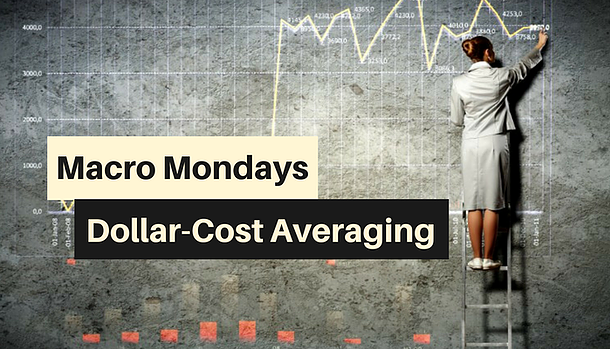
There are a lot of investment strategies out there, and we’ve talked about quite a few, but it occurred to me that I’ve missed a very popular one: dollar-cost averaging. This edition of Macro Mondays will discuss the basics of the dollar-cost averaging, but before you embark on any such strategies, always seek the assistance of a professional adviser.
As always, be sure to check out Investopedia for more information and for all your financial definitions.
What is ‘Dollar-Cost Averaging – DCA’?
Dollar-cost averaging (DCA) is an investment technique of buying a fixed dollar amount of a particular investment on a regular schedule, regardless of the share price. The investor purchases more shares when prices are low and fewer shares when prices are high. The premise is that DCA lowers the average share cost over time, increasing the opportunity to profit. The DCA technique does not guarantee that an investor won’t lose money on investments. Rather, it is meant to allow investment over time instead of investment as a lump sum.
What Are Some Details Regarding the Strategy?
Fundamental to the strategy is a commitment to investing a fixed dollar amount each month. Depending on an investor’s investment objectives and risk profile, the monthly contributions can be invested in a mixed portfolio of mutual funds, exchange-traded funds (ETFs) or even individual stocks. Each month, the fixed amount buys shares at the then-current prices. As share prices decline, the fixed amount buys a higher number of shares; when prices increase, the fixed amount buys fewer shares. The real value of dollar-cost averaging is that investors don’t need to worry about investing at the top of the market or trying to determine when to get in or out of the market.
What is a Real-World Example of Dollar-Cost Averaging?
For example, assume an investor invests $1,000 on the first of each month into Mutual Fund XYZ. Assume that over a period of five months, the share price of Mutual Fund XYZ on the beginning of each month was as follows:












Leave A Comment